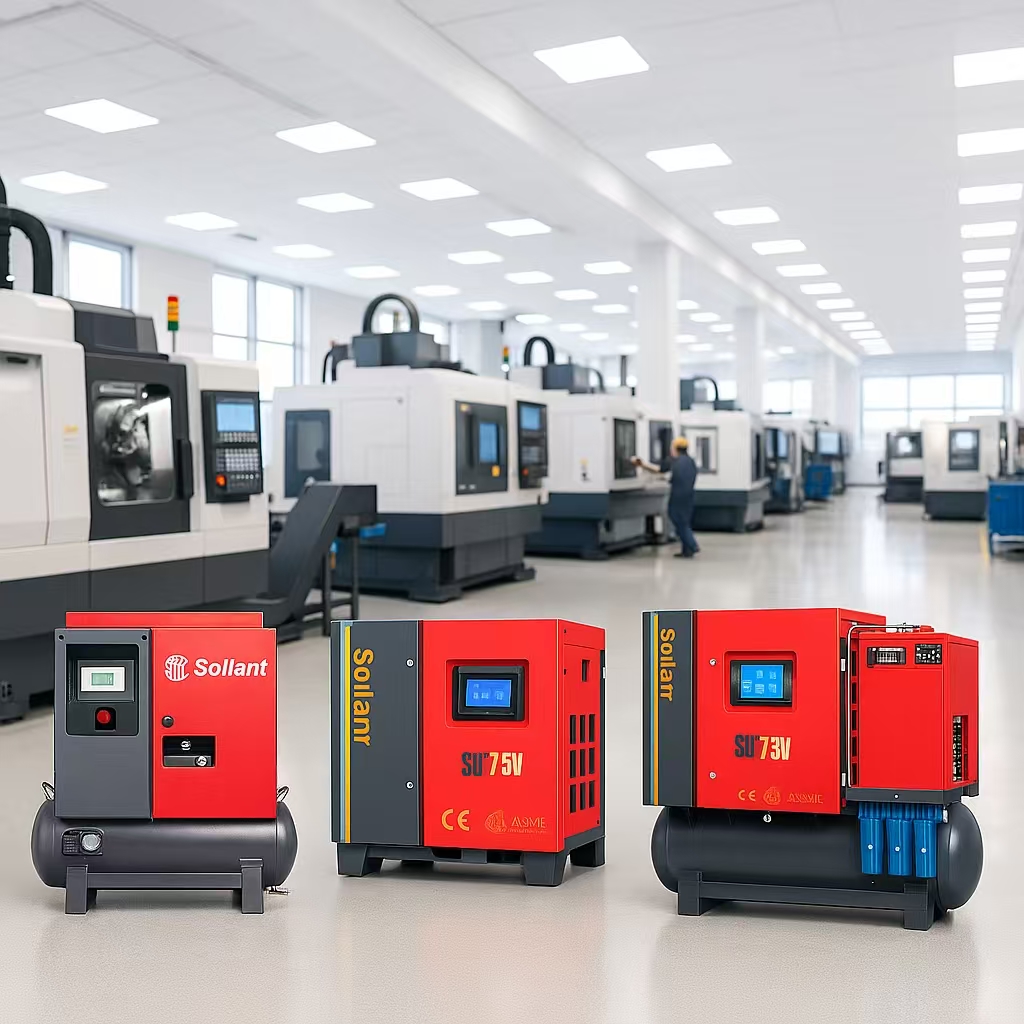4 Key Strategies to Optimize Screw Air Compressors and Reduce Energy Costs by 30%

Screw air compressors are the backbone of modern industrial compressed air systems. Their operating efficiency has a direct impact on energy consumption, production stability, and operational costs. However, optimizing these machines involves more than adjusting a few settings—it requires a strategic approach across equipment selection, system design, and operational management.
In this guide, we explore 4 key dimensions of screw air compressor optimization to help you boost efficiency, extend equipment lifespan, and significantly cut down energy expenses.
Table of Contents
1. Match Air Supply to Actual Load Demand
A common problem in many facilities is oversizing air compressors—running large machines when the actual air demand is low. This leads to massive energy waste. Optimization involves:
Accurately Measure Air Demand
-
Use flow meters and data loggers to track real-time compressed air consumption.
-
Analyze usage trends across shifts or production lines.
-
Choose fixed-speed or variable-speed (VSD) screw air compressors that adjust output based on demand.
Implement Multi-Unit Control Systems
-
For variable load scenarios, deploy a “1 master + 1-2 slave units” setup.
-
Use a central intelligent controller to ensure each unit runs within its optimal efficiency range (70%-90%).
Optimize Unload Time
-
Set an appropriate unload delay time (generally 5–10 minutes).
-
Avoid prolonged operation in unloaded state, which wastes electricity without delivering air.

2. Reduce Pressure Loss Across the Air System
Excessive pressure drops in the air distribution network can silently eat away at your energy budget. To counter this:
Optimize Piping Design
-
Size main pipes based on maximum flow rates, not average.
-
Avoid unnecessary bends, valves, or overly long piping.
-
Keep total pressure drop across the system below 0.02 MPa.
Maintain Purification Equipment
-
Choose appropriate dryers (refrigerated or desiccant) and filters based on air quality needs.
-
Replace or clean filter elements regularly to avoid excessive pressure loss.
Detect and Repair Leaks
-
Even a 10% leak rate can translate into thousands of dollars in wasted energy annually.
-
Use ultrasonic detectors monthly to inspect pipe joints, valves, and connectors.
-
Seal leaks immediately.
3. Monitor and Control Key Operating Parameters
The heart of the screw compressor—the rotor and motor—must run within optimal ranges to deliver peak performance.
Set Proper Discharge Pressure
-
Reduce discharge pressure to the minimum required by the production process.
-
Every 0.1 MPa reduction in pressure can save up to 7% in energy.
Control Oil Temperature and Differential
-
Keep lubricant oil temperature between 80–95°C (for oil-injected screw types).
-
Ensure the temperature difference between inlet and outlet oil is ≤15°C.
-
Clean coolers and check thermostatic valves regularly.
Monitor Motor Performance
-
Track motor current and power factor to avoid overload or inefficient operation.
-
Install variable frequency drives (VFDs) on high-power motors to optimize energy use based on real-time demand.
4. Perform Scheduled Maintenance to Prolong Efficiency

Even the best system loses efficiency if it’s poorly maintained. Regular, structured maintenance prevents failures and keeps energy use under control.
Lubrication Management
-
Change compressor-specific lubricants every 2,000–4,000 hours as per the manual.
-
Avoid mixing oil brands and keep the oil level centered in the sight glass.
-
Watch for signs of oil degradation (e.g., blackening, emulsification).
Inspect Core Components
-
Check rotor clearance every 8,000 hours—excessive clearance reduces air output by 5%–10%.
-
Clean or replace the oil separator filter to maintain pressure differential under 0.1 MPa.
Maintain Cooling Systems
-
For air-cooled compressors: Keep radiators clean, ensure ambient temp < 40°C.
-
For water-cooled compressors: Descale regularly and maintain proper water flow.
Long-Term Optimization: Create a Sustainable System
Optimizing screw air compressors is not a one-time task. It’s a continuous improvement process. To build a sustainable optimization strategy:
-
Create an equipment operation logbook
-
Conduct monthly energy audits
-
Monitor key performance indicators (KPIs) like specific energy consumption (kW/m³)
-
Explore IoT-based monitoring for real-time diagnostics
Conclusion: Achieve 10%–30% Energy Savings and 3–5 Years Longer Equipment Life
By combining load matching, pressure control, system loss reduction, and predictive maintenance, many facilities have successfully:
-
Cut compressor energy costs by 10%–30%
-
Extended compressor lifespan by 3–5 years
-
Improved overall plant efficiency and reduced downtime
If you’re serious about reducing operational costs, now is the time to optimize your screw air compressor system with these actionable strategies.


